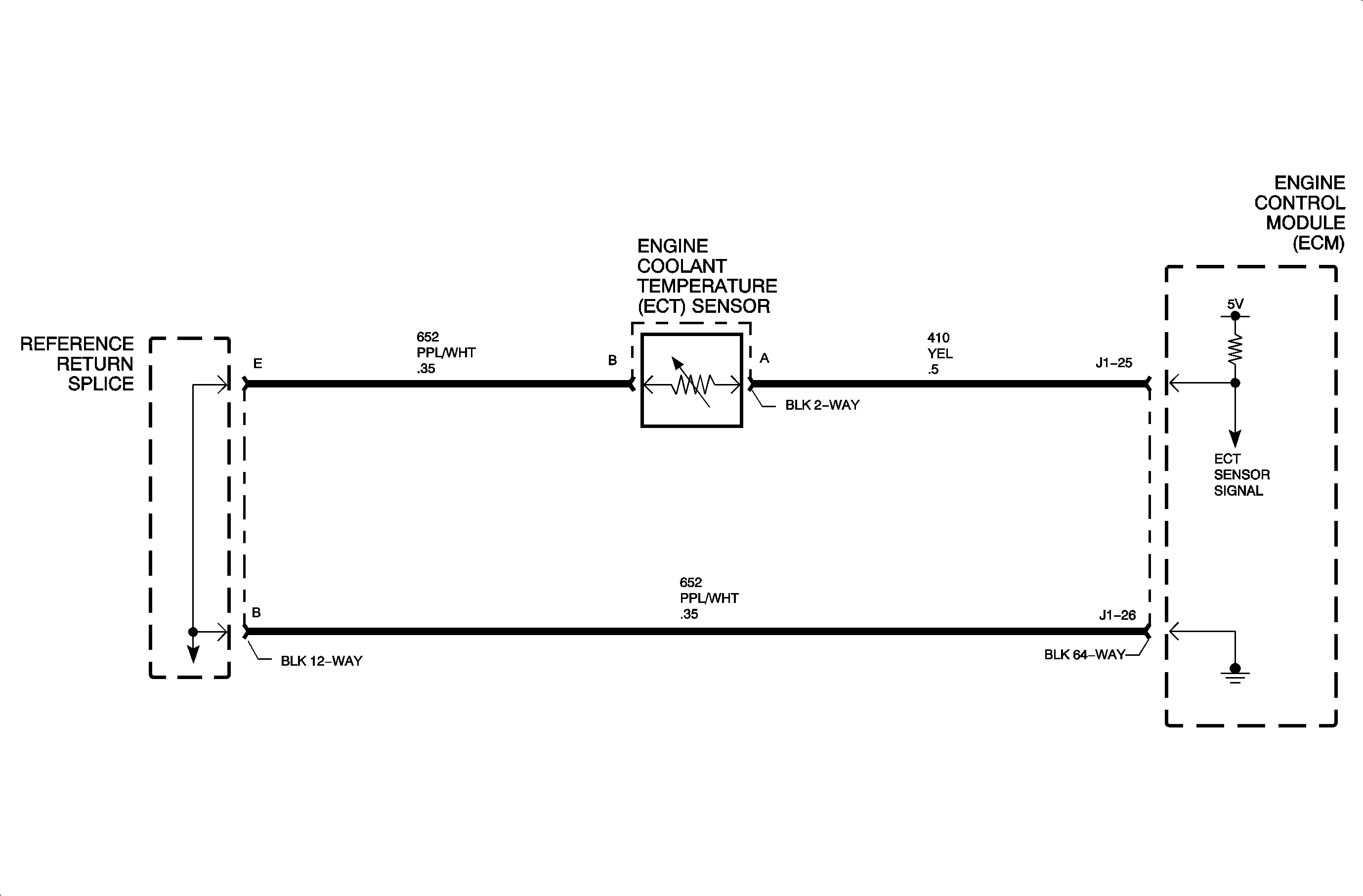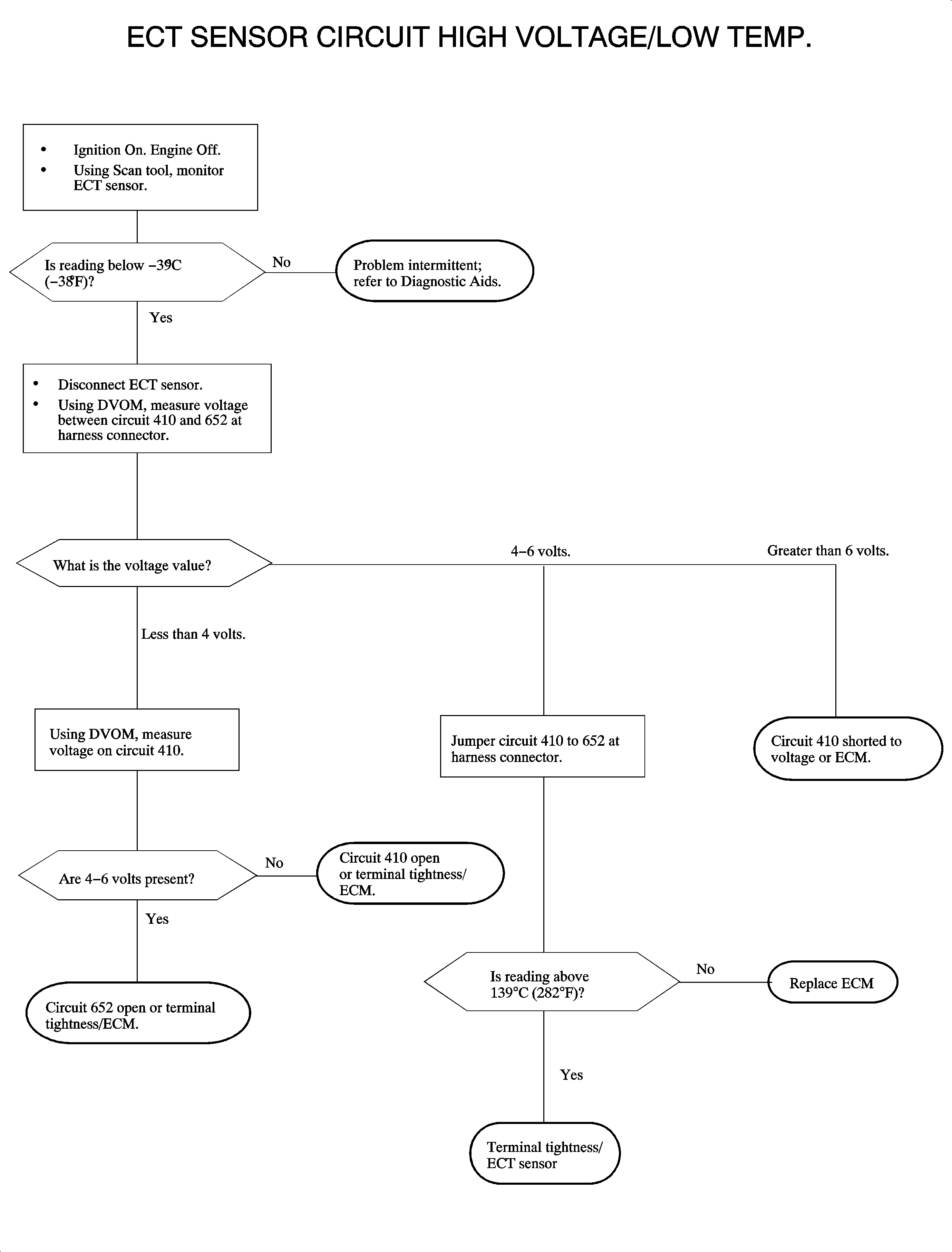
Circuit Description
The engine coolant temperature (ECT) sensor is a thermistor that varies resistance according to changes in engine coolant temperature. The PCM supplies a 5 volt reference through a pull-up resistor(s) to the sensor, which is connected to ground. When the sensor is cold it has high resistance (high signal voltage at PCM). As the sensor temperature increases, its resistance decreases (low signal voltage at PCM). The PCM uses the signal voltage to determine engine coolant temperature. DTC P0118 sets when the ECT sensor signal voltage at the PCM is below the calibrated voltage value (over the calibrated temperature value).
DTC Parameters
DTC P0118 will set if ECT temperature is below --39°C (-38°F) when:
Engine is running.
DTC P0118 diagnostic runs continuously once the above conditions have been met.
P0118 is a (type B) DTC.
Diagnostic Aids
To locate an intermittent problem, use Scan tool to monitor ECT temperature with ignition On, engine Off. Wiggling wires while watching for a change in ECT temperature may locate the area where a short to ground may exist.
Engine coolant leaking from the sensor into the sensor connector will cause a shorted condition across the sensor terminals resulting in an elevated temperature.
The Coolant Temperature gauge will display COLD if DTC P0118 is active.
The PCM will command the cooling fans On if DTC P0118 is active.
Refer to ECT General Description for a Temperature vs. Resistance chart.
Important: A direct short to voltage on circuit 652 may cause internal damage to the ECM ground trace, or open the sensor element in the ECT, IAT, and/or MAP sensors.
If DTCs P0103, P0108, P0113, P0118, P0123, P0223, P0341, P0406 and P1271 are set, there may be an open circuit in the 5 volt reference return circuit 652.
ECT sensor reading may be compared to IAT sensor reading on Scan tool after the vehicle has been sitting longer than 6 hours with the ignition Off. Both readings should be within 6°C or 10°F of each other.

